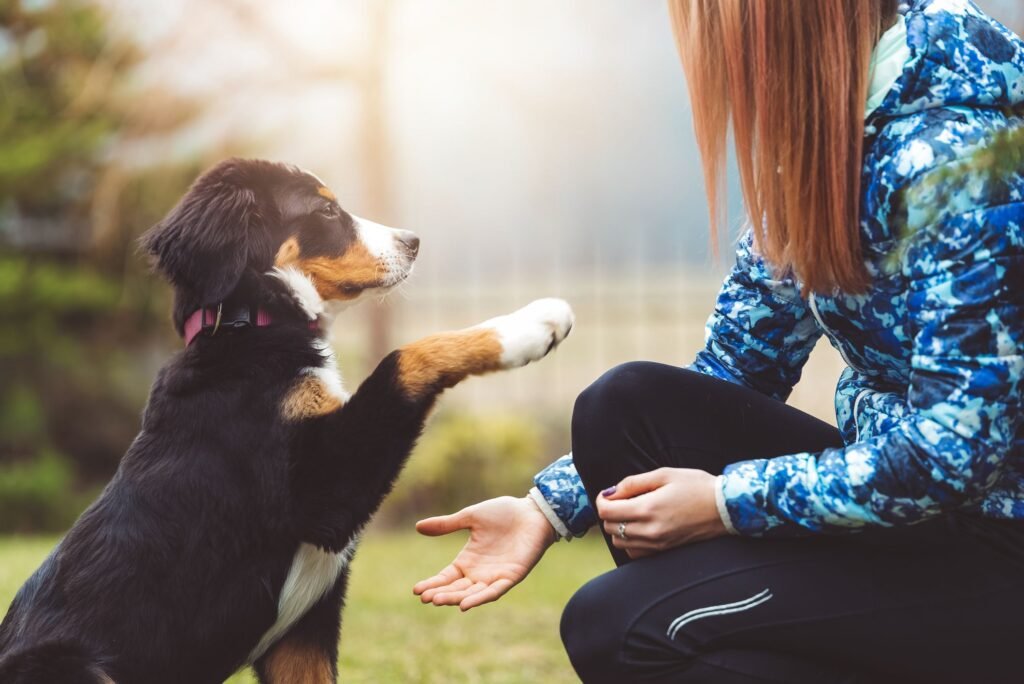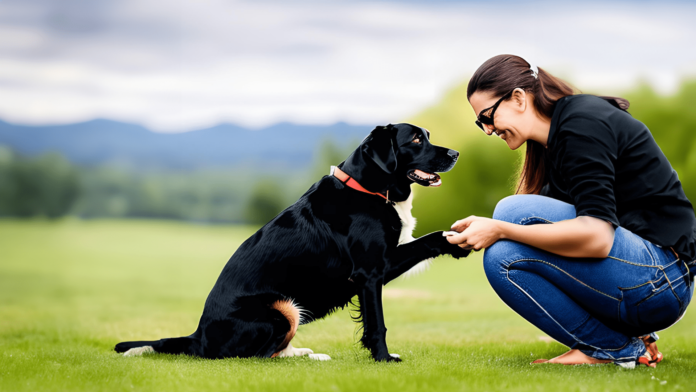No matter if this is your first pet or ninth or eighth in life, getting to know each other as owners and pet parents is always crucial. When meeting someone new it can take time for two parties to build an understanding. The early months can be especially daunting as both parties need time to establish trust before becoming acquainted.
Training. There are countless people trying to understand why proper training is so essential for themselves or their business. First and foremost, it is crucial that all parties involved understand why proper training should take place.
Training Is Critical For Pet Dogs

Dog training should be seen as an integral component of their daily lives, according to Jenn Prill, a certified Professional dog trainer and canine behavior expert from SideKick Dog Training in Milwaukee.
“Life can be challenging enough without adding additional layers of complexity with non-humans navigating it too, let alone canines who don’t speak our language, have different opinions on what constitutes acceptable social interactions and no opposable thumbs”, according to Ms. Shelton. However, training can help teach our pets about living within human society – urban or suburban environments as well as at home.
Jennifer Pratt of Milwaukee-based Wag the Dog and Company. Jennifer believes training helps your pet adapt to life outside its crate as well as provide insight into their thought processes and ways you can support them. She notes:
“Our aim in owning dogs isn’t just for their work; rather, we want them to enjoy spending time together and share in their company,” Pratt emphasizes. Dog training helps this process by building communication channels among us and our animals and building stronger bonds between them all.
Even with our best intentions in training our pets, mistakes may still happen and this could have serious repercussions for their development and for your relationships with them.
Check Out 8 Common Mistakes In Dog Training

Here are eight of the most frequently made mistakes with dog training that pet parents make, which could cause significant issues for their pups.
Mistake #1: Delaying Socialization
If your approach to training your puppy involves waiting until behavior that requires correction emerges, then that may be a wrong approach to learning.
Dr. Amanda E. Florsheim of Veterinary Behavior Solutions and The Training Studio outside Dallas says puppies typically begin learning most about the world between 6-16 weeks of age, making this period an optimal time to introduce your pup to a variety of experiences and environments – driving in a car, walking on different surfaces and textures, meeting new people or other species such as cats – for socialization purposes.
Socialization as an approach to what people typically consider training is the most efficient means of dealing with problems with puppies, says Prill. At this stage of puppy training, teaching behaviors such as sitting, lying down, and lying down shouldn’t be prioritized.
“Focus on socialization, housetraining, crate training, chewing on your puppy while playing with it or chewing on him or her instead,” advises her. She adds that there are numerous abilities crucial for puppies at this age that should be nurtured so he becomes an independent and happy member of our family.
Mistake #2: Believing That Your Dog Is Too Old for Training
While older dogs might seem difficult to train, you can help them learn new tricks! In fact, practicing new skills regularly will have numerous health benefits for both their mental and physical well-being compared with puppies or younger adult dogs. Just keep in mind that results may take longer.
Dr. Florsheim suggests viewing training as a daily Sudoku game for your dog, which will keep their brain sharp through their senior years. Certain changes might need to be made depending on physical limitations; nonetheless all dogs of any age can participate in various forms of training without difficulty.”
Mistake #3: Ignoring Your Dog’s Individuality Debby McMullen, an accredited dog behavior consultant and director at Pawsitive Reactions LLC in Pittsburgh, notes that one of the primary sources of training failure are expectations.
“Understanding that dogs are distinct species from people and have very specific needs is of utmost importance,” she notes. “Appreciating their individual tastes and dislikes as well as their capacity for experiencing emotions like humans do is essential, along with accepting they’re not simply machines or objects.”
This is especially likely when the dog’s parent is familiar with it, since they will naturally associate it with prior pets they had owned.
Mistake #4: Ignoring Breed-Specific Behaviors
While individuality in dogs is certainly appreciated and essential to their well-being, it’s equally essential for owners to remember that dogs have been domesticated over thousands of years with specific purposes in mind; any “unwanted behavior” observed could simply be instinct at play!
“All dogs learn in similar ways, with certain breeds having specific tasks such as protectors, herders, diggers or lap dogs.” Pratt notes. To ensure they remain fulfilled and content, providing these aspects in everyday life should ensure their fulfillment and contentment.
Failing to provide specific outlets for your breed pet may lead to behaviors that are difficult to address.
Mistake #5: Employing Outdated Methods
“Alpha,” “dominance,” and “fear” should all be red flags when training your dog. Relying on resources or specialists promoting these forms of behavior could impede development or, worse yet, even bring on harm for both of you.
“Fear can be the hardest emotion to shake,” states Pratt. “Making sure your actions do not foster it is essential, as is finding someone qualified who can assist when things do arise.”
Instead, choose strategies and professionals who identify as “fear no” or provide training focused on positive reinforcement. These training techniques and strategies aim at rewarding desired behaviors while redirecting any undesirable ones.
Pratt suggests framing it all as one question: When my dog acts inappropriately, what are my options for reinforcing him or her again? Does reinforcement get taken away or do I receive explanation? While one option will help your pup thrive while another won’t.
Mistake #6: Seeking Advice in Unfavorable Sources
Aside from outmoded dominance-centric training materials and trainers available, Pratt has also noticed an alarming trend regarding advice gleaned from strangers on the internet.
“People may experience behavior problems with their dogs that they want to address – such as screaming or yelping when near the food bowl – that they want to alter. Many turn to social media sites for advice,” notes Miller. Other people can offer suggestions as they have experience working with dogs themselves; everyone has opinions about what should be done but this doesn’t guarantee they are grounded in facts or even useful.”
No matter your need – be it answers to a query, personal consultation or professional assistance in dealing with behavioral issues – professional help should always come from those advocating safe techniques as we have mentioned earlier. It is also wise to look for individuals possessing qualifications like:
Certified Professional Dog Trainer)
Certified Behavior Consultant Canine (CBCC), IAABC (International Association of Animal Behavior Consultants).
Mistake #7: Hovering Over Your Dog
Part of effective dog training requires becoming aware when and how you should keep your pup out of his path while also giving him space and freedom to work through solutions on his own. According to Dr. Florsheim, there’s no better time or place than during walks–known by some as “sniffari.”
“While we would like for our dogs to learn to walk alongside us and pay attention when needed, give them a leash so they can sniff and play,” according to she says.
Mistake #8: Pushing Your Dog Too Hard
Are you finding that your pup seems disengaged with his training after only a few minutes? According to Dr. Florsheim’s advice, this shouldn’t be seen as an issue with him personally; just make sure the session ends within four minutes for maximum effectiveness.
Keep them wanting more, she recommends. Equally as important is not trying to force a square peg into an oval hole – some dogs prefer training in groups while others may struggle staying focused in such an environment; other may prefer practicing agility by playing games while another would prefer working his nose instead.

